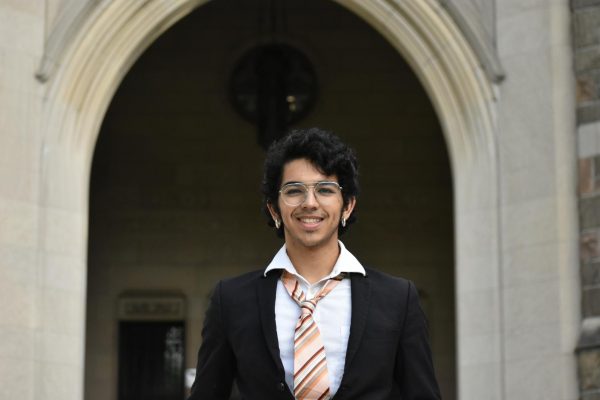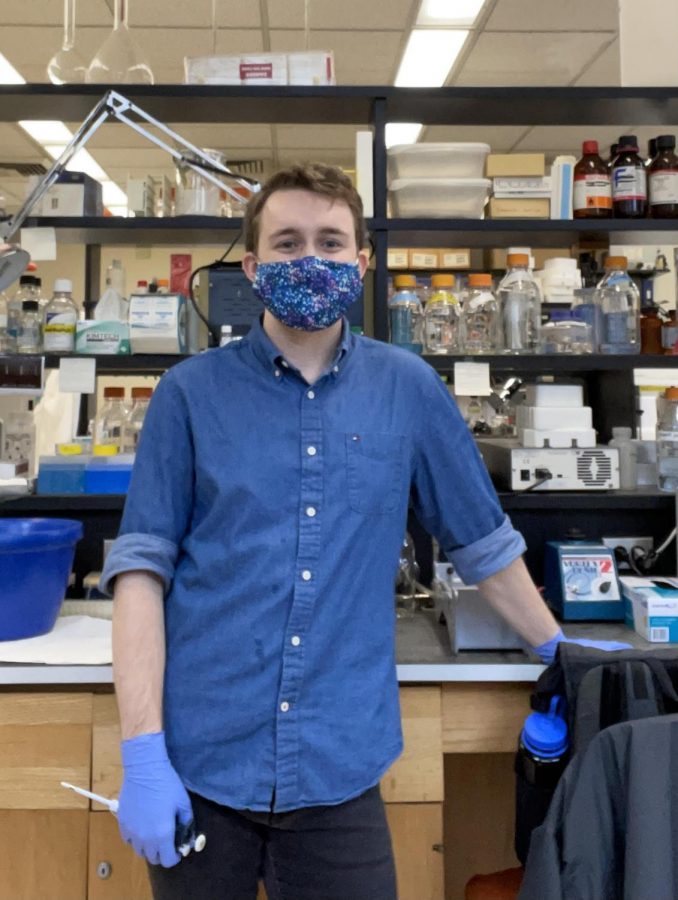Junior Studies Gene Mutations in Fruit Flies
Starting with remote research in the summer of 2020 and continuing through the following fall semester, Max Luf, FCRH ’22, has been studying the neurodegenerative effects of mutations on the ELAC2 gene in humans.
The ELAC2 gene, an abbreviation for the ElaC Ribonuclease Z 2, is a protein-coding gene within human RNA. According to Luf, the mutation of the ELAC2 gene causes a variety of diseases, including hypertrophic cardiomyopathy (inadequate blood flow caused by unusually thickened heart muscles), epilepsy, impaired hearing and psychomotor retardation. The mutation can also stunt the development of the brain, which can lead to abnormally small head size. This condition is known as microcephaly.
For his research on ELAC2, Luf looked to the Drosophila melanogaster, also known as the common fruit fly, as a model. The ELAC2 gene is present in the insect and functions just as it does in humans.
“I use the Drosophila melanogaster to model and study how the mechanisms by which mutations to the ELAC2 gene produce degeneration of the brain (neurodegeneration) in order to help us better understand this mechanism within humans,” said Luf.
He is studying the mutations of the ELAC2 gene in the Drosophila as a means to understand how the mutations would operate mechanically inside human genetics.
Luf said he hopes his research will allow him to obtain concrete results that explain neurodegenerative diseases as a direct result of ELAC2 mutation. On a larger scale, understanding this link will provide researchers with a working foundation that can be used to develop therapeutic treatments.
“[I hope it] will enable better health outcomes for patients with these rare mutations,” he said.
Luf’s research project has gone through a series of successes and setbacks, all of which he cited as being equally beneficial to the project.
“Working on my project has been an extremely rewarding process not only because of my triumphs, but also because I have been able to learn so much from my setbacks,” he said.
Due to COVID-19, Luf was unable to be physically present within a laboratory to conduct hands-on research. Instead, he opted to research, analyze and extrapolate data from published literature to increase his preparedness for a return to the lab.
While his current project provided him with plenty of new experiences, Luf said many of his past experiences helped guide him. In high school, he shadowed neurological and neuropathological professionals, both doctors and researchers, and noted how these professionals had used Drosophila to model neurodegenerative diseases like Alzheimer’s.
So far, the research has given Luf substantial experience working with a plethora of molecular biology study techniques used to manipulate DNA. Expanding his repertoire of scientific techniques has only cemented Luf’s passion for neuroscience.
“I wanna give a big shout out and express my absolute gratitude towards my research mentor Dr. Dubrovsky and my graduate student supervisor Kate Migunova for their continued guidance and encouragement as I work on this project,” said Luf. “I am endlessly thankful to be able to work with and learn from them.”
At this stage in his project, Luf hopes to continue his research through the next semester and into his senior year.

Sebastian Diaz is a senior from Chapel Hill, N. C. who is double majoring in journalism and film. After starting as a news reporter for The Fordham Ram...












































































































































































































